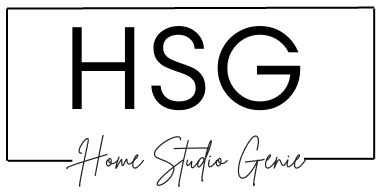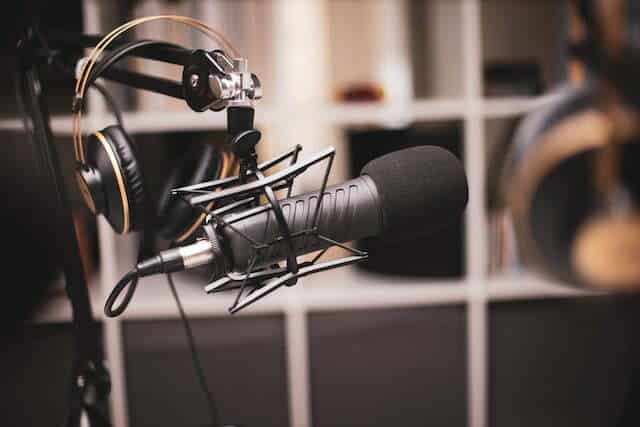When it comes to microphones in the music production world, there is often confusion between the usage of pop filters vs windscreens.
While some individuals mistakenly believe that they are interchangeable and serve identical purposes, it’s important to understand the differences between the two.
In this article, we’ll delve into the unique functions of pop filters and windscreens, shedding light on their roles in microphone usage.
By gaining a clear understanding of their differences, you will be better equipped to determine which option is most suitable for your individual needs and recording circumstances.
So, let’s dive in and explore the differences between pop filters vs windscreens, and discover which one suits your needs best.
The Quest for Flawless Audio
Even with the advancement of technology, microphones still have their limitations. While they excel at capturing the nuances of our voices, they also tend to pick up unwanted background noise.

Whether recording in a studio or on the go, having a solution to minimize these distractions is crucial for achieving superior audio quality.
That’s where pop filters and windscreens come into play.
These nifty devices act as guards against unwanted noise, allowing our voices to come through clearly.
They help us achieve that professional sound we all crave.
Understanding Pop Filters:
Let’s start with pop filters. These little wonders are designed to combat those pesky “pop” sounds.
When we sing or speak into a microphone, certain consonants like Ps and Bs produce bursts of air that create unwanted plosive sounds.
Pop filters, usually made of metal or nylon mesh, diffuse these air bursts, preventing them from hitting the microphone directly.
But that’s not all!
Pop filters also come to the rescue when it comes to taming sibilance—the hissing sound produced by letters like “S” or “Sh.”
They act like air diffusers, minimizing unwanted noise and ensuring cleaner audio. You can even get creative and make your own DIY pop filter at home if you’re feeling crafty.
Pros and Cons of a Pop Filter
Pros of a Pop Filter
Reduces distortion and popping
As I mentioned earlier, one of the main benefits of using a pop filter is that it reduces distortion and popping. This makes for a cleaner and more polished streaming or recording.
Creates a smoother vocal track
A pop filter smoothens your vocal track, getting rid of harsh spikes. This is because it absorbs the sound waves before they reach the microphone, preventing them from causing clipping and distortion.
Reduces sibilance
Another benefit of using a pop filter is that it prevents high-pitched hissing sounds, or sibilant sounds, from taking over your recording. Examples of this include many s and z sounds. Sibilant sounds can cause harsh and unpleasant sounds in recordings.
Improves sound quality
In general, using a pop filter will improve the sound quality of your recordings. It reduces distortion and popping, creating a smoother vocal track.
Larger than a windscreen
Pop filters are also typically larger than windscreens. As a result, they provide a larger surface area to absorb unpleasant sound waves.
Cons of a Pop Filter
May require a separate stand
In some cases, you may need to purchase a separate stand for your pop filter. However, you can avoid this by buying a microphone with a built-in pop filter.
Can be expensive
Pop filters can be a bit pricey, so they may not be the best option for you if you’re on a tight budget.
Needs proper positioning to work effectively
A pop filter needs to be appropriately positioned in front of the microphone. If it’s not placed correctly, it may not work as well as you’d like.
Can obstruct the vocalist’s view
Since pop filters are typically larger than windscreens, they can block your view. This can be a nuisance if you’re trying to watch a chat while streaming.
Exploring Windscreens:
Now, let’s turn our attention to windscreens. These fluffy wonders, typically made of foam, offer a different solution to our audio woes.
Windscreens are particularly handy in outdoor recording situations. They’ll come in handy to shield our microphones from wind noise and other external distractions.
Thicker windscreens are even more effective as they absorb more noise.
With that said, it’s important to note that windscreens can also soften higher frequencies. So, if you’re recording indoors or in a studio, a thick foam cover may not be the best choice.
Pros of a Windscreen
Reduces wind noise
The main benefit of using a windscreen is reducing wind noise. This makes for a cleaner audio recording, especially when recording outdoors.
Prevents unwanted sounds
Windscreens can also help prevent unwanted sounds from being picked up by the microphone. This is especially helpful when streaming in a noisy environment.
Improves sound quality
In general, using a windscreen will improve the sound quality of your recordings.
Cons of a Windscreen
There are a few potential drawbacks to using a windscreen:
Smaller than pop filters
Windscreens are typically smaller than pop filters. As a result, they provide a smaller surface area to absorb sound waves.
May not filter out plosives as well as pop filters do
While premium quality windscreens can help reduce plosives, some may not be effective at filtering out all pops.
Types of Windscreens: Which One is Right for You?
When it comes to windscreens, different options cater to various microphone types and recording scenarios.
Here are some common types of windscreens you may encounter:
- Foam Windscreens: These are the most common type and are generally suitable for most recording situations. Foam windscreens offer good wind noise reduction and are affordable.
- Fur Windscreens: Ideal for outdoor recording in windy conditions, fur windscreens provide superior wind noise reduction. They are commonly used in film and television production.
- Metal Mesh Windscreens: Designed for harsh outdoor environments, metal mesh windscreens offer excellent protection against wind noise while still allowing optimal sound transmission. They are commonly used in field recording and news reporting.
Pop-filter vs Windscreen: Can They Be Interchanged?
No, while both pop-filters and windscreens serve distinct purposes, they are not interchangeable.
Pop filters primarily address plosive sounds, whereas windscreens focus on reducing wind noise and environmental disturbances.
Attempting to substitute one for the other would result in compromised audio quality and an ineffective solution to the specific issue you are facing.
The Benefits of Filtering:
In addition to reducing plosives and sibilance, pop filters and windscreens offer additional advantages that contribute to superior audio quality:
- Minimizing breath sounds: These filters effectively diminish the sound of your breath during singing or speaking, ensuring a polished recording.
- Noise reduction: Windscreens excel in outdoor recordings, limiting wind noise and other external disturbances.
- Protection: Both filters safeguard your microphone from dirt, dust, and moisture, preventing damage and ensuring optimal performance.
Choosing the Right Filter:
When it comes to selecting between a pop filter and a windscreen, consider the following factors:
- Voice tone: If you have a slightly high-pitched voice, foam windscreens can help mellow down higher frequencies. However, it’s important to keep in mind that residual plosives may still require some post-production editing.
- Proper fit: Make sure your chosen filter securely fits over your microphone. A loose filter may shift or create additional rubbing sounds, distracting both you and your audience.
- Microphone compatibility: Pop filters are versatile and can be used with any microphone. On the other hand, windscreens come in different shapes and sizes, so choose one that suits your mic best.
- Video considerations: If you’re recording a video podcast, a pop mesh filter may obstruct your face while speaking. In that case, a foam windscreen is the way to go.
Considering Cost
In terms of cost, foam windscreens are often included when purchasing microphones. With that said, acquiring additional foam windscreens is relatively inexpensive.
This is because they are simple pieces of molded foam tailored to fit microphones.
On the other hand, pop filters can be more expensive, especially those designed to deliver a professional studio experience.
Nevertheless, investing in a high-quality pop filter is worthwhile for frequent recording.
Ensuring you have superior microphones would be a better long-term investment.
If you do not plan to use your microphones outdoors, a foam windscreen may not be necessary.
This is because it mainly targets wind noise reduction.
In such cases, you could experiment with a DIY solution, such as using a sock to cover the microphone and assess the results.
We’ve come to the conclusion that pop filters are essential in studio environments and highly recommended.
This excludes when you’re working with individuals who possess expert voice control and can effectively manage the force of their words.
For most people, a pop filter significantly simplifies the recording process and enhances the overall audio quality.
In Conclusion: Pop Filters vs Windscreens
So, after exploring the ins and outs of pop filters and windscreens, you’re now equipped to make an informed decision for your audio recording needs.
Metal mesh pop filters excel at eliminating consonant plosives. On the other hand, foam windscreens effectively manage higher frequencies and combat wind noise.
Even if you only have a windscreen, fear not! It will still significantly enhance your audio quality compared to no filter at all.
Remember to experiment and find the perfect filter for your unique audio adventures.
Sources:
Microphone Windscreen vs Pop Filter: What’s the Difference?

Mike is a skilled musician, guitar technician, and music producer with a passion for audio and gear. He excels in teaching guitar, editing podcasts/videos, and creating captivating soundscapes using cutting-edge hardware, software, and plugins. Mike’s talent and commitment make him highly sought-after in the industry, inspiring fellow musicians worldwide.


